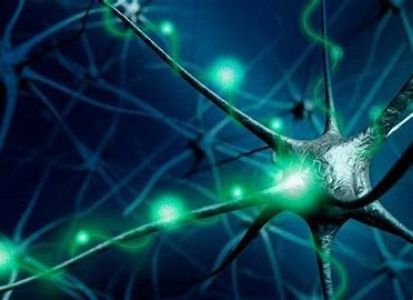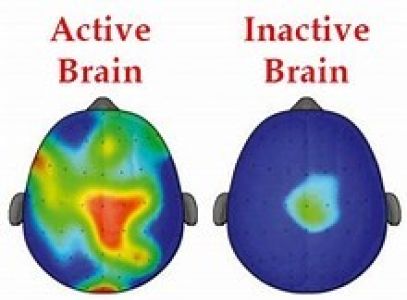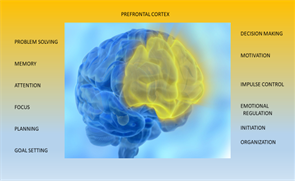
The CUBE Education Center
Approach
Recent discoveries in neuroscience have revolutionized the way we treat trauma. We now know that when a person is “triggered” by memories or reminders of traumatic events, primitive parts of the brain (Threat Response System) are activated causing a “fight, flight, or freeze response”. While this very physical response is activated the thinking part of the brain, or the Prefrontal Cortex shuts down. In some people, the Threat Response System (TRS) is constantly activated. It is like the switch controlling fight, flight, or freeze is stuck in the “on” position.
In my world, one of the most amazing scientific discoveries is that the brain can rewire itself. This is great news for everyone and especially good news for people who have experienced trauma. They are no longer destined for a life struggling to control behavior and emotions and trying to exist with a devastating lack of Executive Functions. Executive functions include memory, organizational skills, problem-solving, impulse and emotional control, attention, focus, and motivation. Without these abilities trauma victims face daily living challenges while trying to cope with anxiety, intrusive memories, “flash anger”, and nightmares to name just a few.
The treatment of trauma has been revolutionized by these new scientific discoveries. We know that trauma victims have endured tremendous suffering because of experiences that were beyond their control. The impact of trauma on the brain negatively affects all areas of life such as school, relationships, and work to name a few. To make matters worse, people who have experienced trauma form negative and inaccurate beliefs about themselves, others, and the world around them. As a result of these new discoveries, our approach may be different from what many of you have heard about counseling or experienced in the past.
What to Expect

- Introduction: At the first visit you will be able to share with the therapist what you are experiencing and what you would like help with. The therapist will then share a little about the CUBE and what you can expect from treatment.
- Evaluation – The therapist will complete a brief screening to determine how trauma is affecting the regulation of your autonomic nervous system (TRS). This is a simple evaluation that looks at how trauma is affecting you physically, emotionally, and cognitively.
- Explanation – The therapist will provide a summary of the conclusions of the evaluation, the proposed plan of action, the course of treatment, and the expected results.
After the initial visit, you can decide if the CUBE is a fit for you and if you want to schedule another appointment. There is no charge for the first meeting.
In early treatment, the therapist will focus on calming the Threat Response System located in the more primitive part of the brain, the lizard. This is because the thinking part of the brain or Prefrontal Cortex goes offline when the (TRS) is activated making it difficult to think or control emotions and behavior. There are many new and effective techniques to “rewire” neural pathways connected to triggers without having to recount the actual traumatic events. In addition, there are other new medical techniques that allow the “on” switch to be reset, much like hitting the reset button on a computer.
Once the lizard is calmed, it is then possible to address faulty beliefs and develop new more effective ways of living. Each person decides if, when, and to what extent they want to talk about the actual events of trauma. This is especially important in childhood trauma because often the individual has little or no memory of what occurred. If memories do occur, we can use our knowledge of brain function to calm the primitive parts of the brain responsible for the flight, fight or freeze response before addressing the emotional and cognitive effects of these experiences.
Trauma and the Brain
The neural structure of the brain is physical;
it is made up of connected brain cells.

Thoughts, experiences, feelings, and desires that are particularly intense and/or occur frequently leave an imprint on the brain’s neural structure. This is especially true if they are conscious.

Uneventful experiences or random thoughts drift through the brain without our awareness leaving little impact on the physical or neural structure of our brains.
In trauma, the brain has created a neural structure that runs directly to the fear center of our brain activating a fight, flight, or freeze response. The fear center is in a non-thinking, non-verbal area of the brain, sometimes referred to as the lizard brain. We cannot use traditional talk therapy when the lizard is active because the Prefrontal Cortex (PFC) or thinking part of the brain shuts down. Therefore, the first task in treating the effects of PTSD or complex PTSD is to calm the lizard.
The Prefrontal Cortex (PFC) is the CEO of the brain. Below is a diagram of the prefrontal cortex and the functions it controls. These are known as the Executive Functions because they are responsible for the management of our daily lives.

Without the PFC, the person is operating on instinct and emotion. That is why people with extremely negative life experiences struggle to control behavior and emotions. If the activation is frequent, the person will struggle to cope with normal day-to-day functions.
How reactions are wired is described above. Research using neuroimaging has shown the brain can rewire itself (neuroplasticity). Using various techniques, it is possible to eliminate negative pathways and create new and more productive thought patterns. This is called Positive Neuroplasticity. Once the lizard is calmed, the focus of therapy is on identifying negative beliefs and coping skills and developing more effective patterns.
Please feel free to contact me with any questions you might have.
Services provided
Individual, marriage, and family counseling to those affected by trauma.
The CUBE also provides trainings on Motivational Interviewing (MI), EFT the Emotional Freedom Technique, Quick Trauma Screening (QTS), and The Dynamics of Family Trauma to professionals, groups and organizations.
